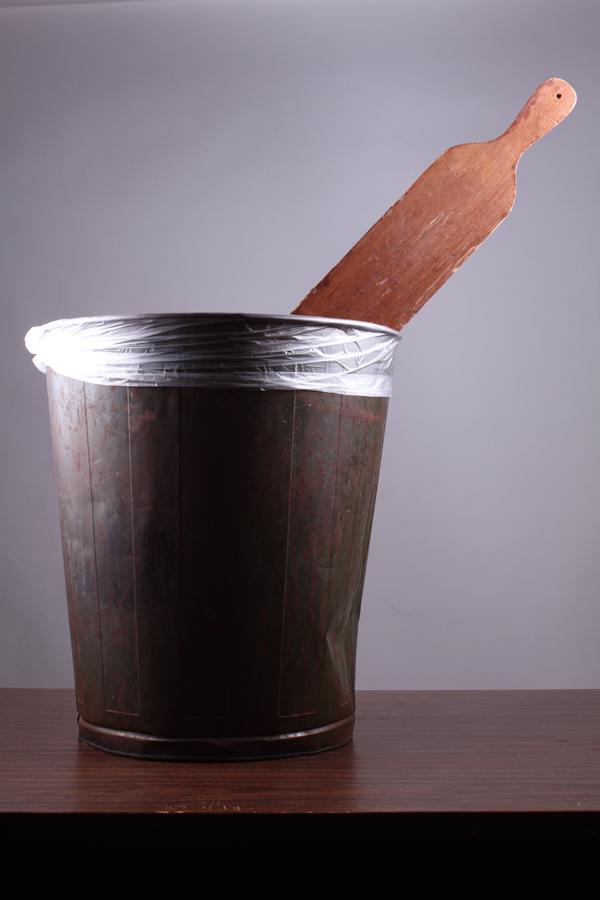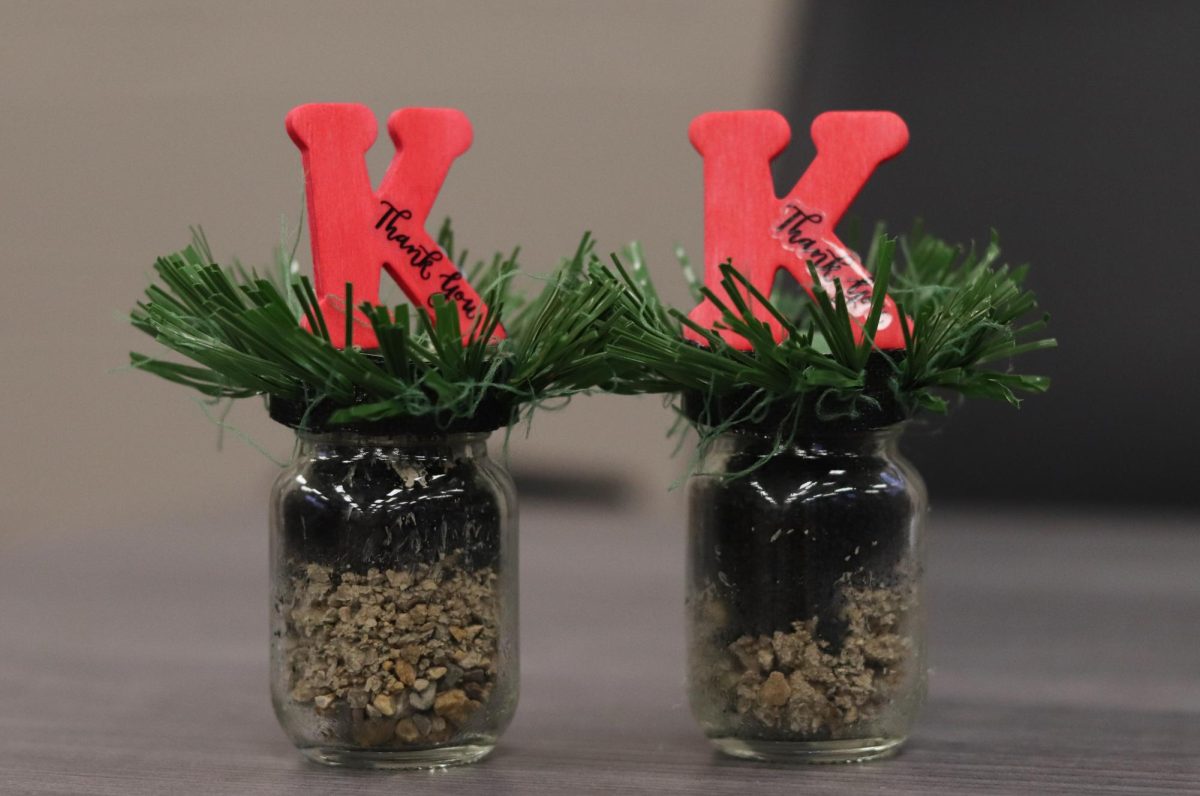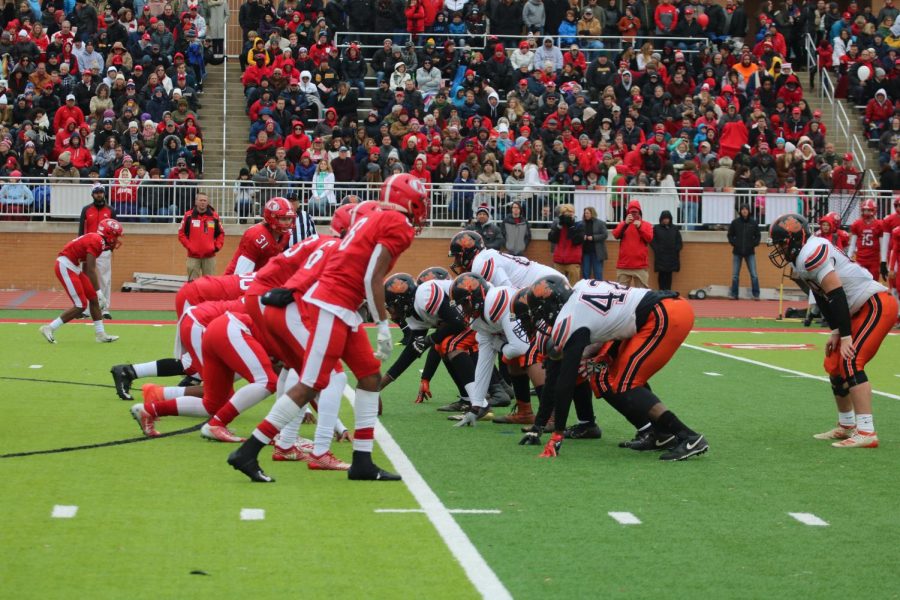Among the KHS pennants, old football team photographs and a 1968 cheerleading picture, there is a wooden paddle with holes drilled into it to increase speed. This paddle, formerly used to physically punish disobedient students, is as much a part of KSD’s past as the other artifacts nestled in glass cases at Nipher Middle School.
Dr. Michele Condon, Nipher principal, estimates teachers retired the paddle sometime before the 1970s, but the school has chosen to leave it on display.
“We don’t display it as a threat to the students,” Condon said. “It’s just a part of our history that should be displayed.”
Corporal punishment, or physical punishment, has begun to falter in the last few decades in the United States. According to stophitting.com, a website by The Center For Effective Discipline, 19 states still allow the use of corporal punishment in public schools, including Missouri. For Ian Madden, sophomore, the possible presence of corporal punishment in a school disturbs him.
“I understand corporal punishment in Missouri isn’t placed into practice,” Madden said. “But the fact that it’s there is scary. Schools need to encourage rational expression, not violent aggression.”
Dr. Michael Havener, principal, said KSD does not allow the use of corporal punishment because one does not need to hurt another person to teach them a lesson about right from wrong. Havener, along with the school board, believes discipline is a learning process and physical punishment is not an opportunity to learn.
Katie Phelps, special education teacher, graduated from Cor Jesu in ’93. She said teachers tapped students’ knuckles with rulers if they looked down while practicing typing.
“I didn’t question it,” Phelps said. “I wouldn’t say I appreciated it, but I can type without looking at my fingers. It was just the way it was.”
Matt Stoner, social studies teacher, attended Chaminade from 1989-1993. Before a student was completely enrolled, he had to sign a waiver that gave staff permission to use corporal punishment as discipline. His experiences with corporal punishment were different from Phelps’.
“I saw a teacher grab a student by the hair and crack his forehead against the desk a couple times to wake him up. I saw a kid get thrown into a locker once. I saw a kid get picked up in his desk and thrown out of the classroom,” Stoner said.
Stoner said students at his high school often understood and accepted the teacher’s use of corporal punishment because the student punished had earned the discipline. Stoner and his friends sometimes thought it was hysterical and laughed it off, using it as comedy. Other times, Stoner said seeing physical punishment scared them to death. What mainly stood out for Stoner was corporal punishment’s usefulness.
“Yeah, it was effective,” Stoner said. “After a few times, the kid straightened up their behavior. I think that’s why a lot of people saw the logic in it. It worked.”
Despite believing in corporal punishment’s effectiveness, Stoner does not think it belongs in public schools.
“I don’t think it has a place in public schools simply because students don’t come here voluntarily, so it’s wrong to be subjected to something like that involuntarily,” Stoner said. “You go [to private school] voluntarily, so I think there’s a difference. I think if parents agree to it, and students agree to it and teachers do it in moderation, then it has its place.”
Nancy Menchhofer, English teacher, has a different perspective on corporal punishment. For her first two years out of college in the early 1970s, Menchhofer and her husband taught at a small middle and high school in Dixie County, Florida, a place she described as a piny backwoods town with tough kids.
“We were stunned to find that corporal punishment was not only legal, but relatively common,” Menchhofer said.
At the school, teachers were allowed to use corporal punishment as long as it was with a paddle. They also had to have another teacher present to make sure the punishment was not excessive. Menchhofer refused to be a witness or use the paddle herself.
“I think the teachers probably thought I was soft for not wanting to use it, and they believed it was a useful tool,” Menchhofer said. “But my gut tells me it was ineffective.”
According to stophitting.com, 29 countries have outlawed corporal punishment. Hannah Roethemeyer, sophomore, is glad that corporal punishment is slowing down.
“It would put some sort of fear in me,” Roethemeyer said. “I’d see it as wrong, unfair and cruel.”
Madden looked at corporal punishment’s effects on academic performance.
“Students and teachers need an element of trust to learn. If the teacher used corporal punishment, you’d respect their fists, but would you respect their intellect? No,” Madden said. “It’s giving way to barbarism and savagery.”
Even as corporal punishment becomes an increasingly controversial topic with activist groups such as The Center for Effective Discipline springing up, teachers and staff members may still legally practice in Missouri. Roethemeyer hopes it ends soon.
“We’re still kids, still learning,” Roethemeyer said. “We need to know that if we mess up, we aren’t going to be beaten.”













![Of course [people have been mean to me],” Jack Baranski, sophomore, said. “I don’t remember their names though. History forgets those who were judgmental of others’ creativity.”](https://www.thekirkwoodcall.com/wp-content/uploads/2019/11/printout-30-e1572837544286-900x454.jpg)
